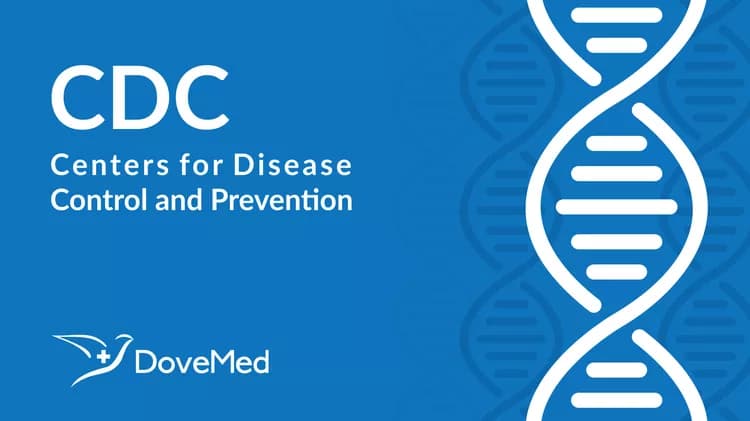
New CDC Report Shows Deaths From Cancer Higher In Rural America
Learn more about Cancer prevention and control in rural communities at CDC.
Despite decreases in cancer death rates nationwide, a new report shows slower reduction in cancer death rates in rural America (a decrease of 1.0 percent per year) compared with urban America (a decrease of 1.6 percent per year), according to data released today in CDC’s Morbidity and Mortality Weekly Report. The report is part of a series of MMWR studies on rural heath.
The report is the first complete description of cancer incidence and mortality in rural and urban America. Researchers found that rates of new cases for lung cancer, colorectal cancer, and cervical cancer were higher in rural America. In contrast, rural areas were found to have lower rates of new cancers of the female breast and prostate. Rural counties had higher death rates from lung, colorectal, prostate, and cervical cancers.
“While geography alone can’t predict your risk of cancer, it can impact prevention, diagnosis and treatment opportunities – and that’s a significant public health problem in the U.S.,” said CDC Acting Director Anne Schuchat, M.D. “Many cancer cases and deaths are preventable and with targeted public health efforts and interventions, we can close the growing cancer gap between rural and urban Americans.”
In the study, researchers analyzed cancer incidence data from CDC’s National Program of Cancer Registries and the National Cancer Institute’s Surveillance, Epidemiology, and End Results program. Cancer deaths were calculated from CDC’s National Vital Statistics System. Counties were grouped by urbanization and population size.
Key findings from analysis of cancer rates
Death rates were higher in rural areas (180 deaths per 100,000 persons) compared with urban areas (158 deaths per 100,000 persons). Cancer deaths in rural areas decreased at a slower pace, increasing the differences between rural and urban areas.
While overall cancer incidence rates were somewhat lower in rural areas (442 cases per 100,000 persons) than in urban areas (457 cases per 100,000 persons), incidence rates were higher in rural areas for several cancers, including those related to tobacco use such as lung cancer and those that can be prevented by cancer screening such as colorectal and cervical cancers.
While rural areas have lower incidence of cancer than urban areas, they have higher cancer death rates. The differences in death rates between rural and urban areas are increasing over time.
“Cancer – its causes, its prevention, and its treatment – is complicated,” said Lisa C. Richardson, M.D., oncologist and director of CDC’s Division of Cancer Prevention and Control. “When I treat cancer patients, I don’t do it alone – other healthcare professionals and family members help the patient during and after treatment. The same is true for community-level preventive interventions. Partnerships are key to reducing cancer incidence and the associated disparities.”
The CDC researchers identify a number of proven strategies that can reduce the gaps in new cancer cases and deaths. Healthcare providers in rural areas can:
Promote healthy behaviors that reduce cancer risk. Prevent tobacco initiation, promote tobacco cessation, and eliminate secondhand smoke exposure. Limit excessive exposure to ultraviolet rays from the sun and tanning beds. Encourage physical activity and healthy eating to prevent and reduce obesity, which is associated with several types of cancer.
Increase cancer screenings and vaccinations that prevent cancer or detect it early. Recommend patients receive vaccination against cancer-related infectious diseases such as HPV and hepatitis B virus. Recommend appropriate cancer screening tests such as Pap tests and colonoscopy.
Participate in the state-level comprehensive control coalitions. Comprehensive cancer control programs focus on cancer prevention, education, screening, access to care, support for cancer survivors, and overall pursuit of good health.
These data from CDC provide a clear direction for the work that needs to be done to reduce cancer disparities throughout the U.S., and provide the foundation for proven strategies that could be implemented. Proven strategies to improve health-related behaviors, increased use of vaccinations that prevent infections that can cause cancer, and use of cancer screening tests – particularly among people that live in rural and underserved areas – can help reduce the rates of cancer and cancer deaths across America.
For more information on rural health: www.cdc.gov/ruralhealth.
For more information on CDC’s cancer prevention efforts and programs, visit: www.cdc.gov/cancer.
Related Articles
Test Your Knowledge
Asked by users
Related Centers
Related Specialties
Related Physicians
Related Procedures
Related Resources
Join DoveHubs
and connect with fellow professionals

0 Comments
Please log in to post a comment.